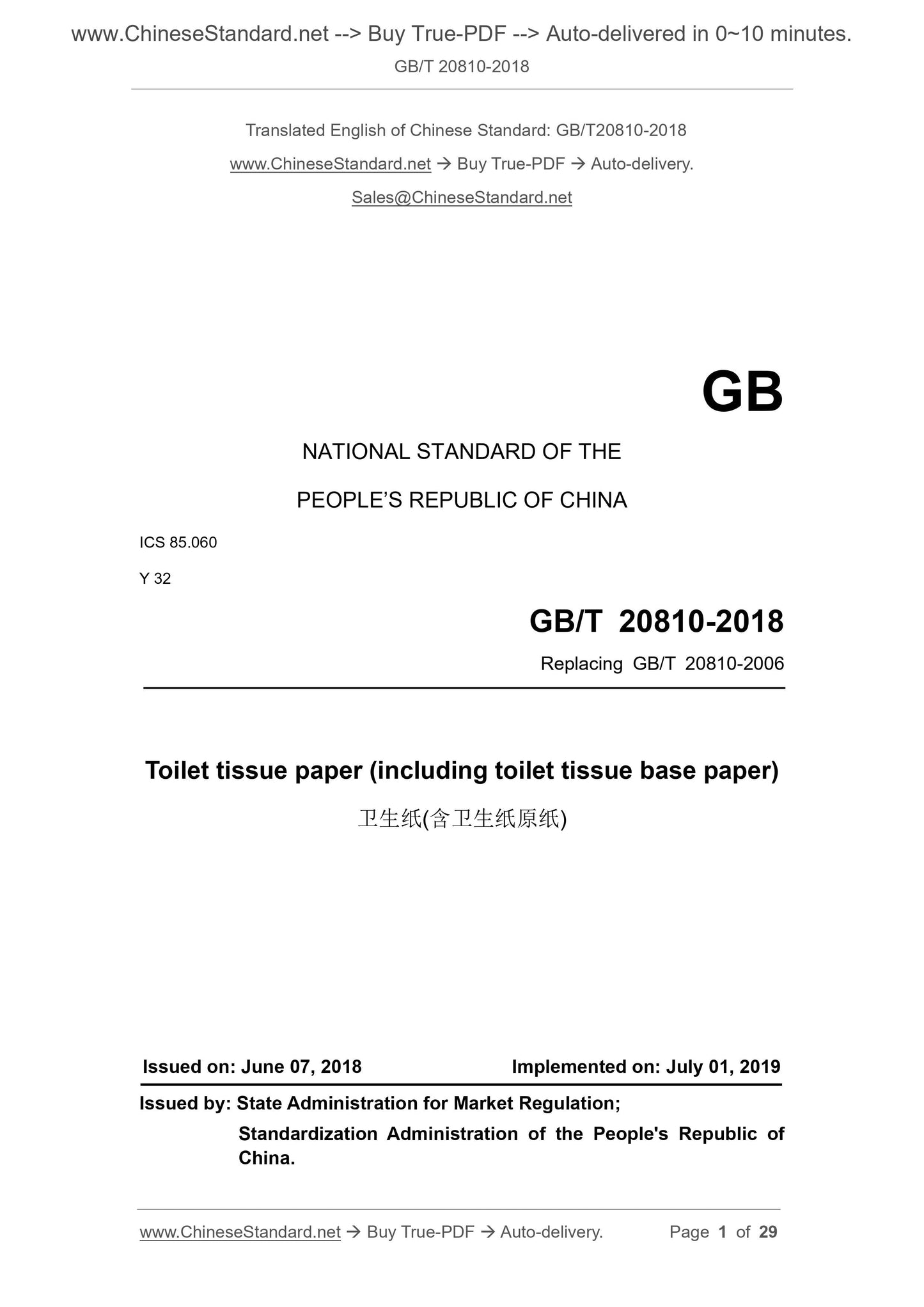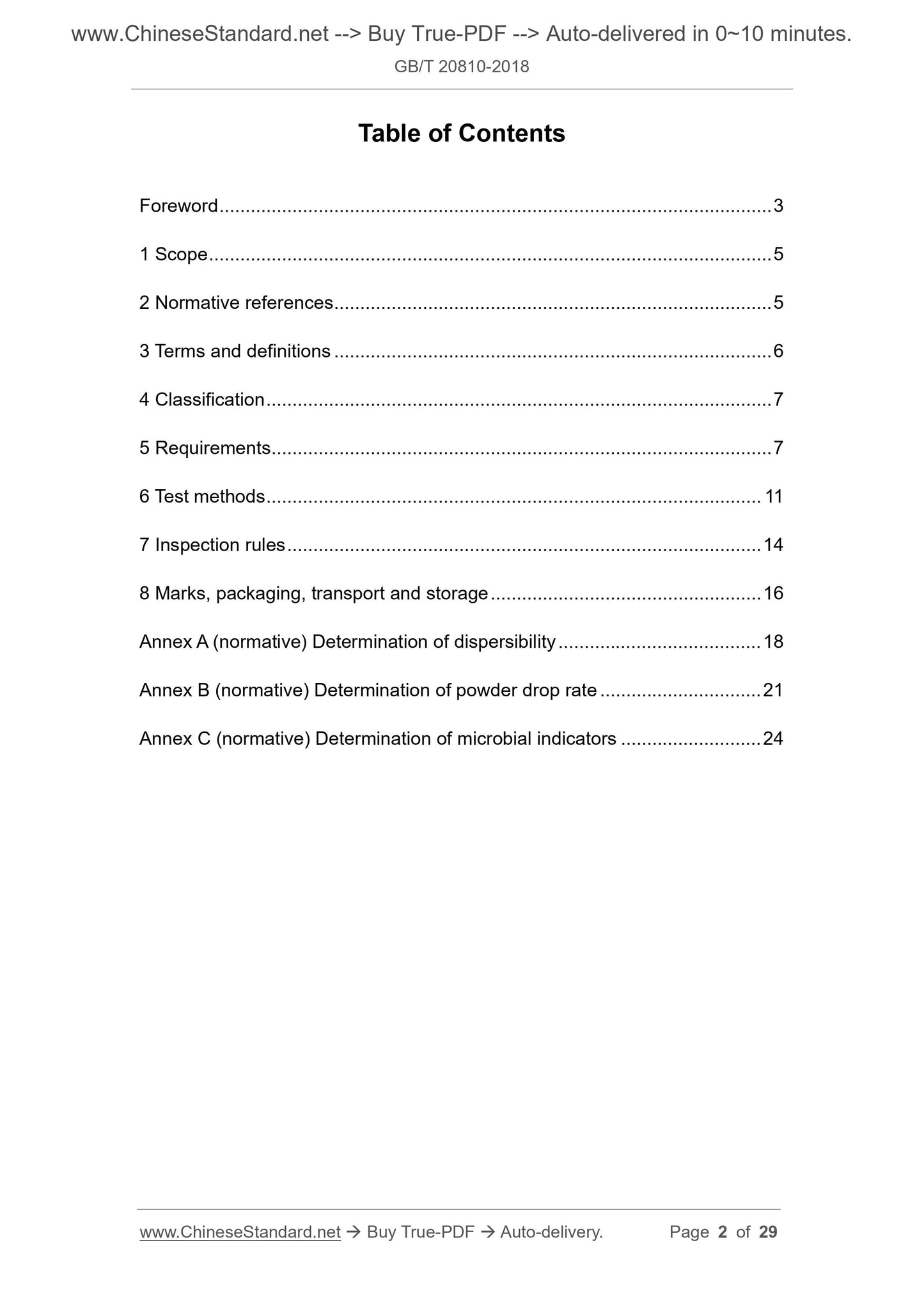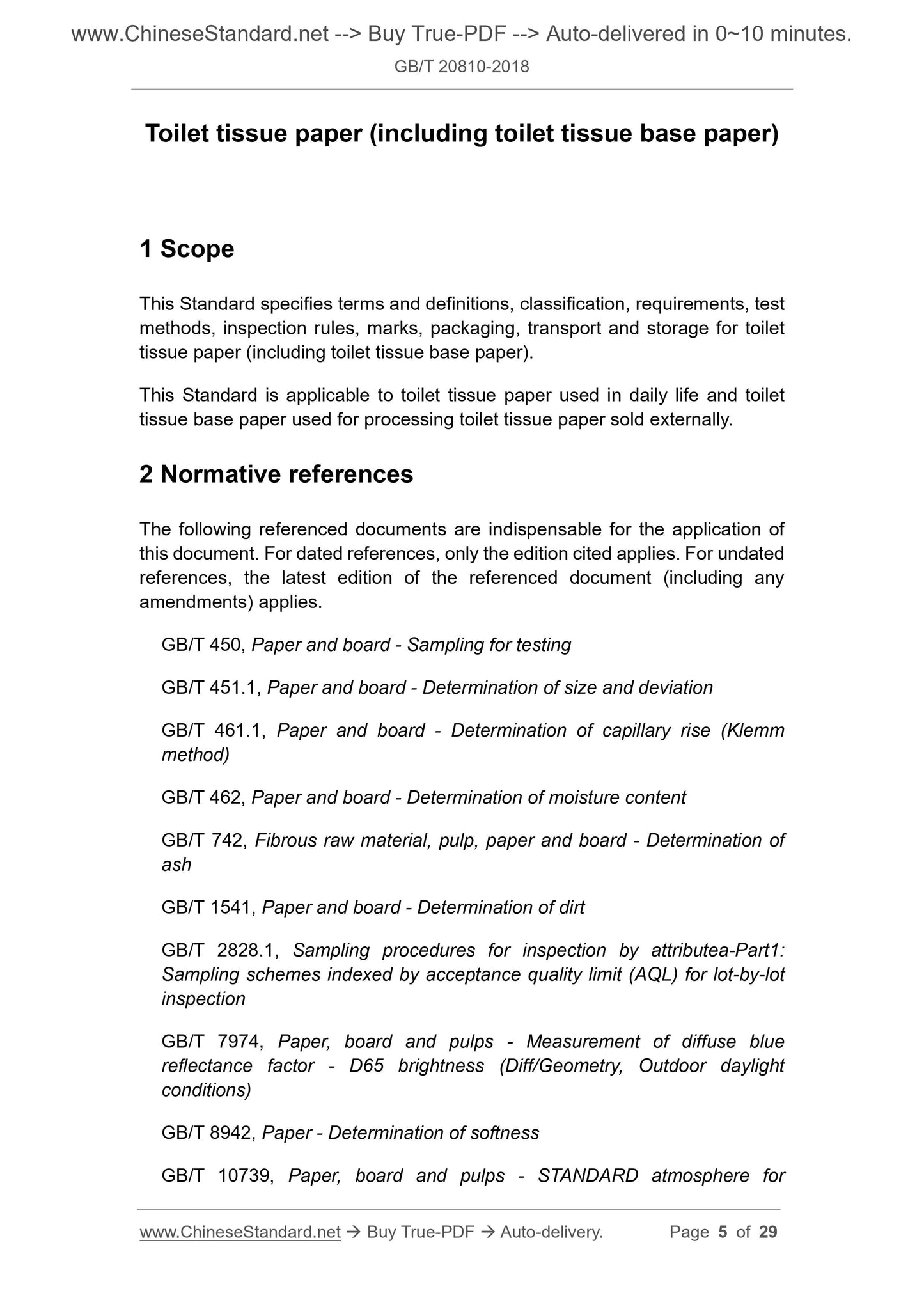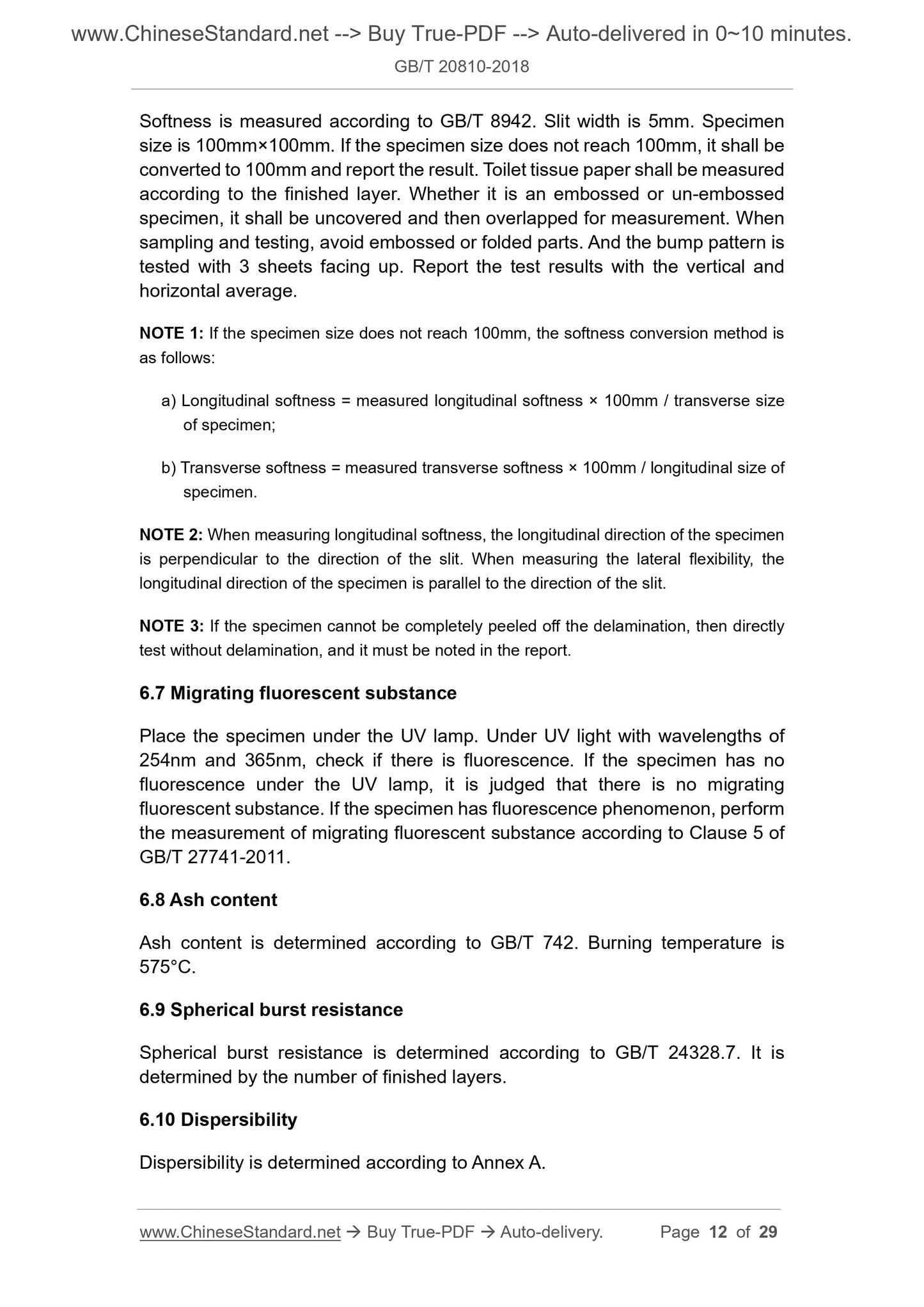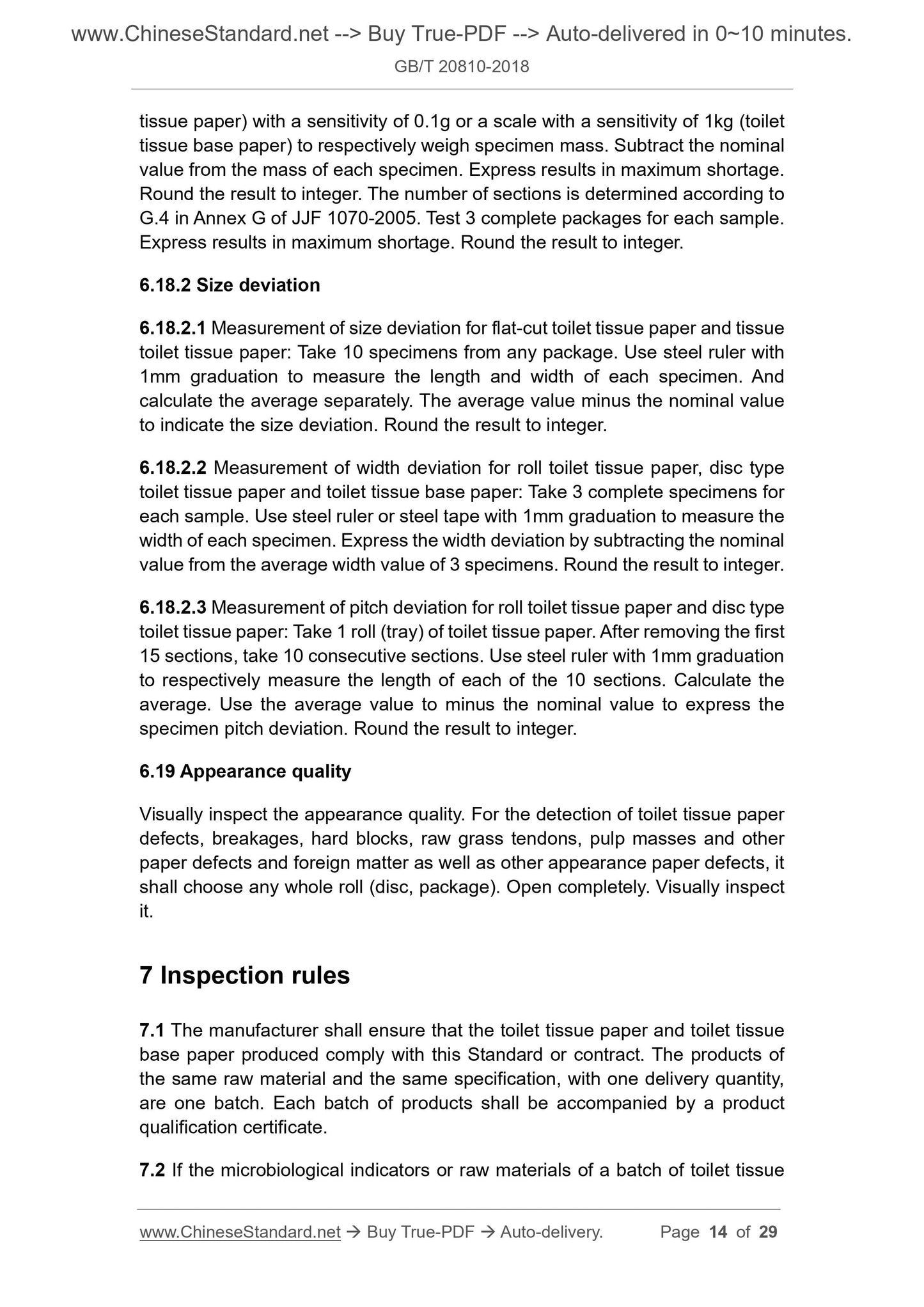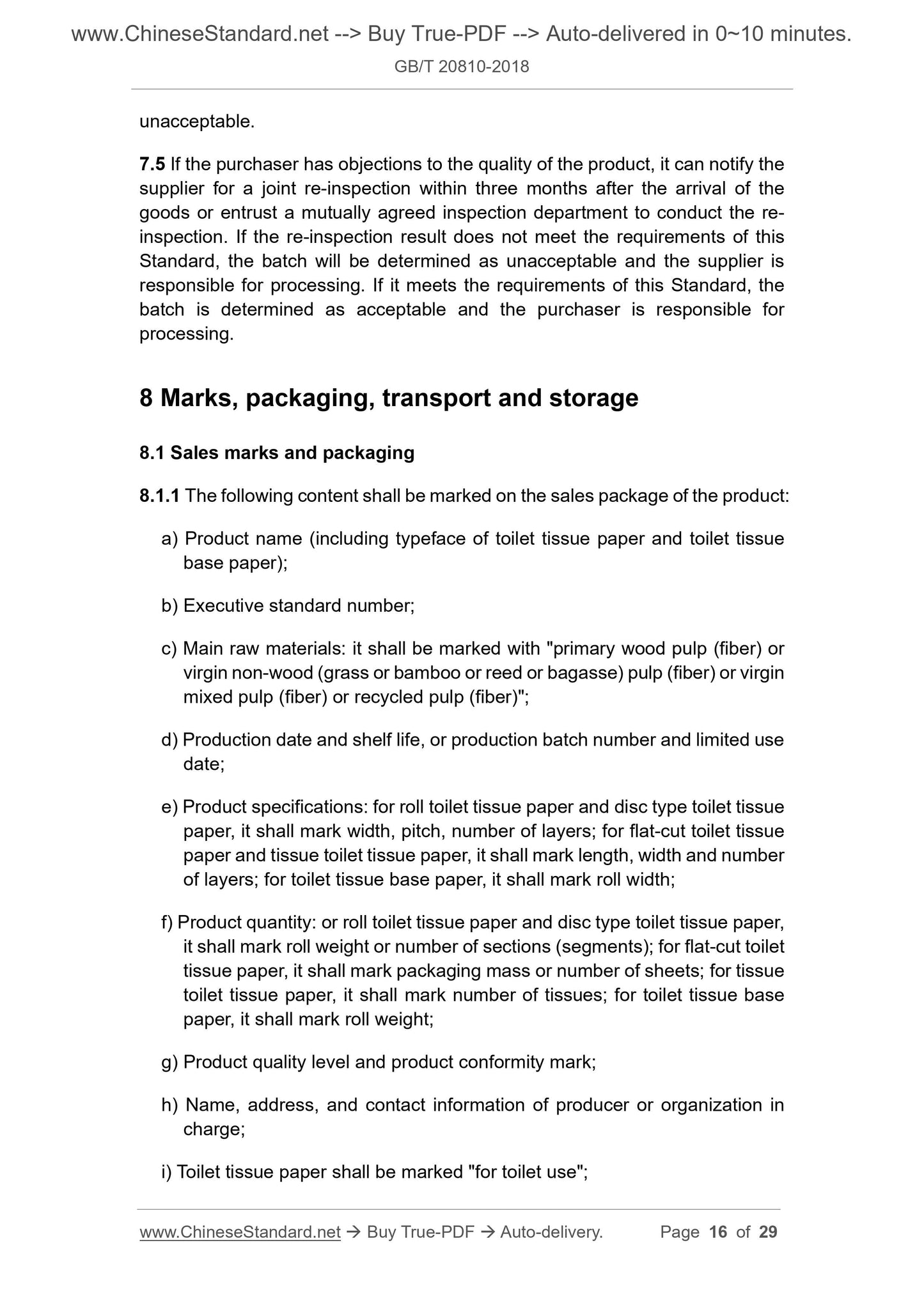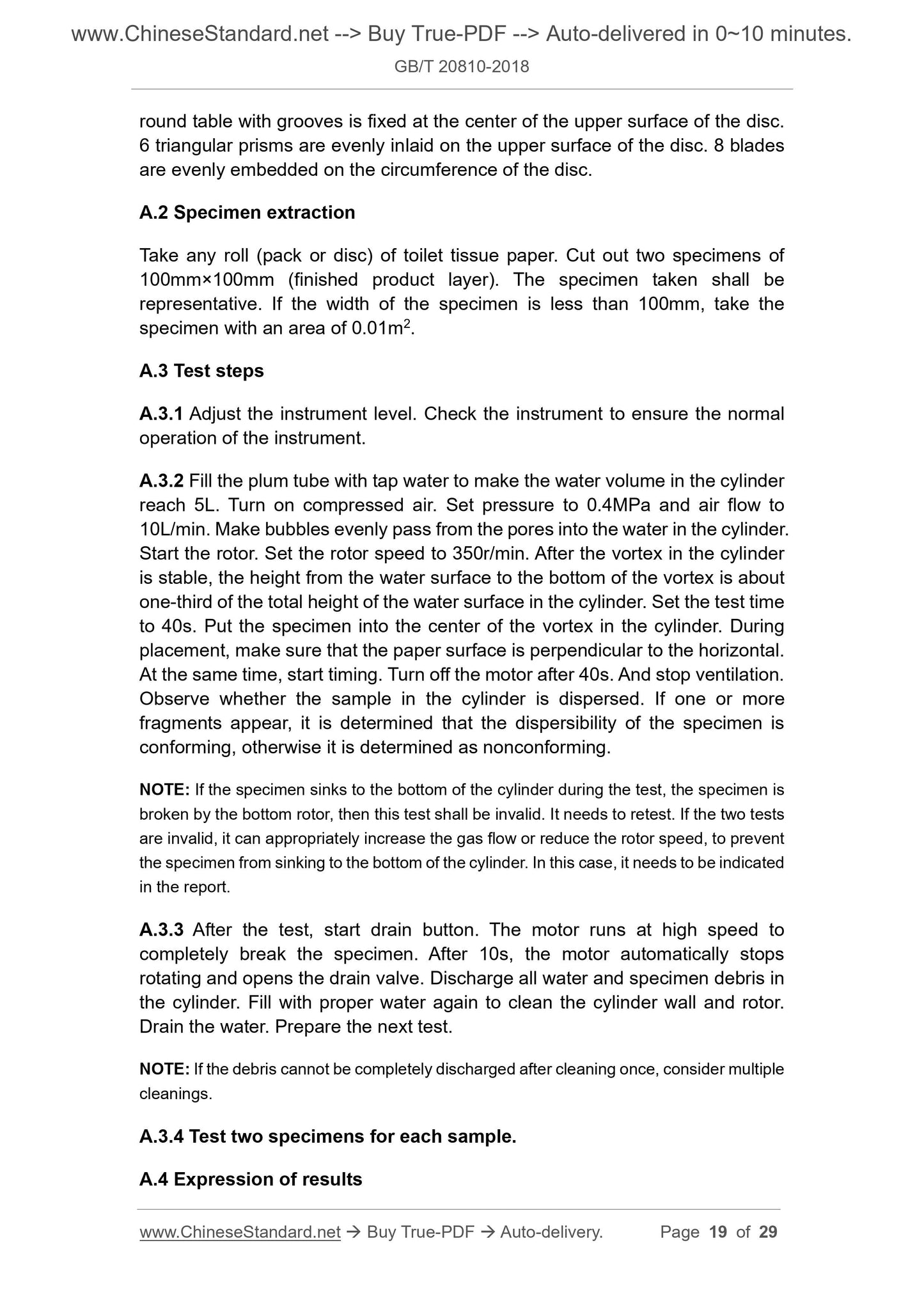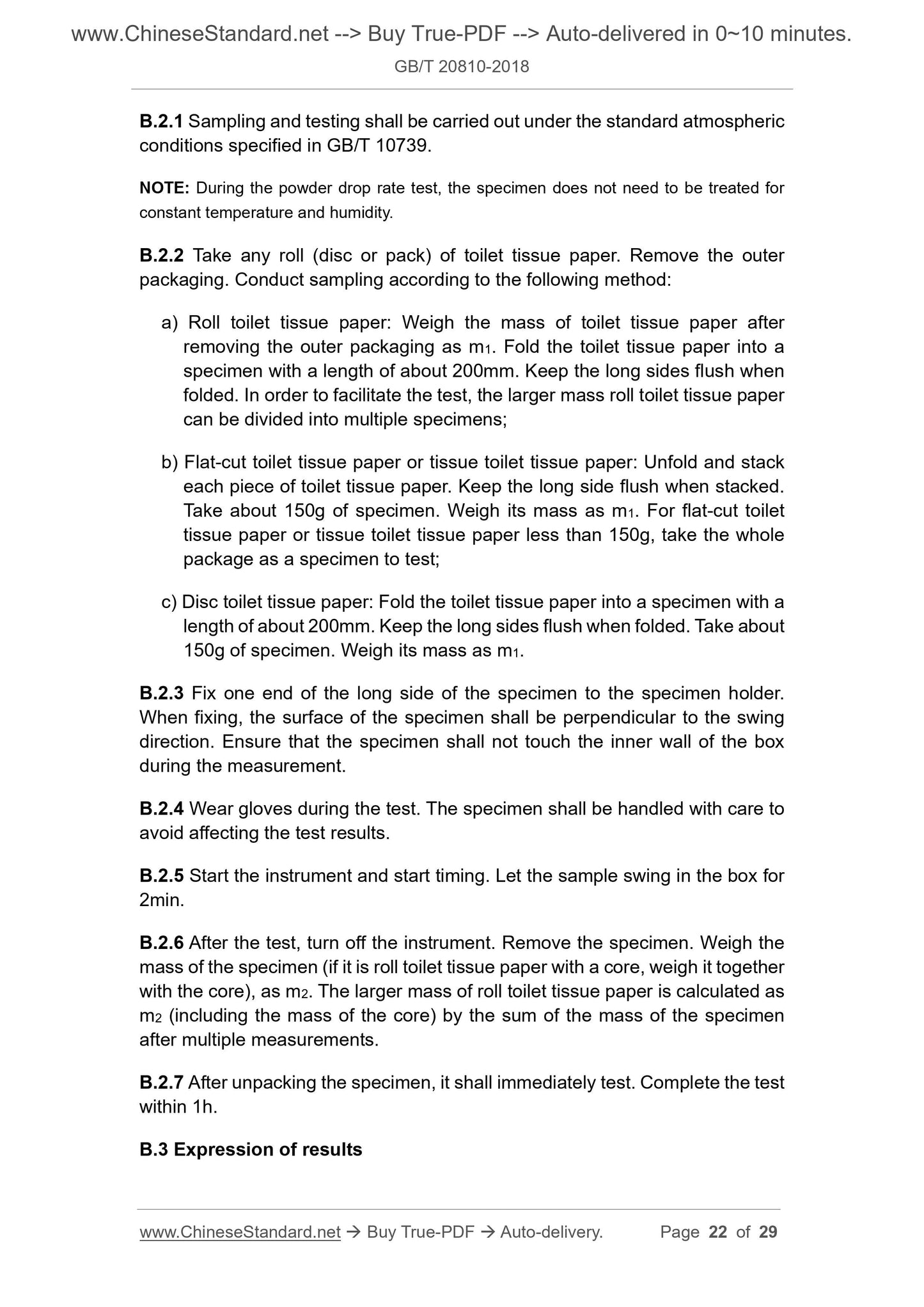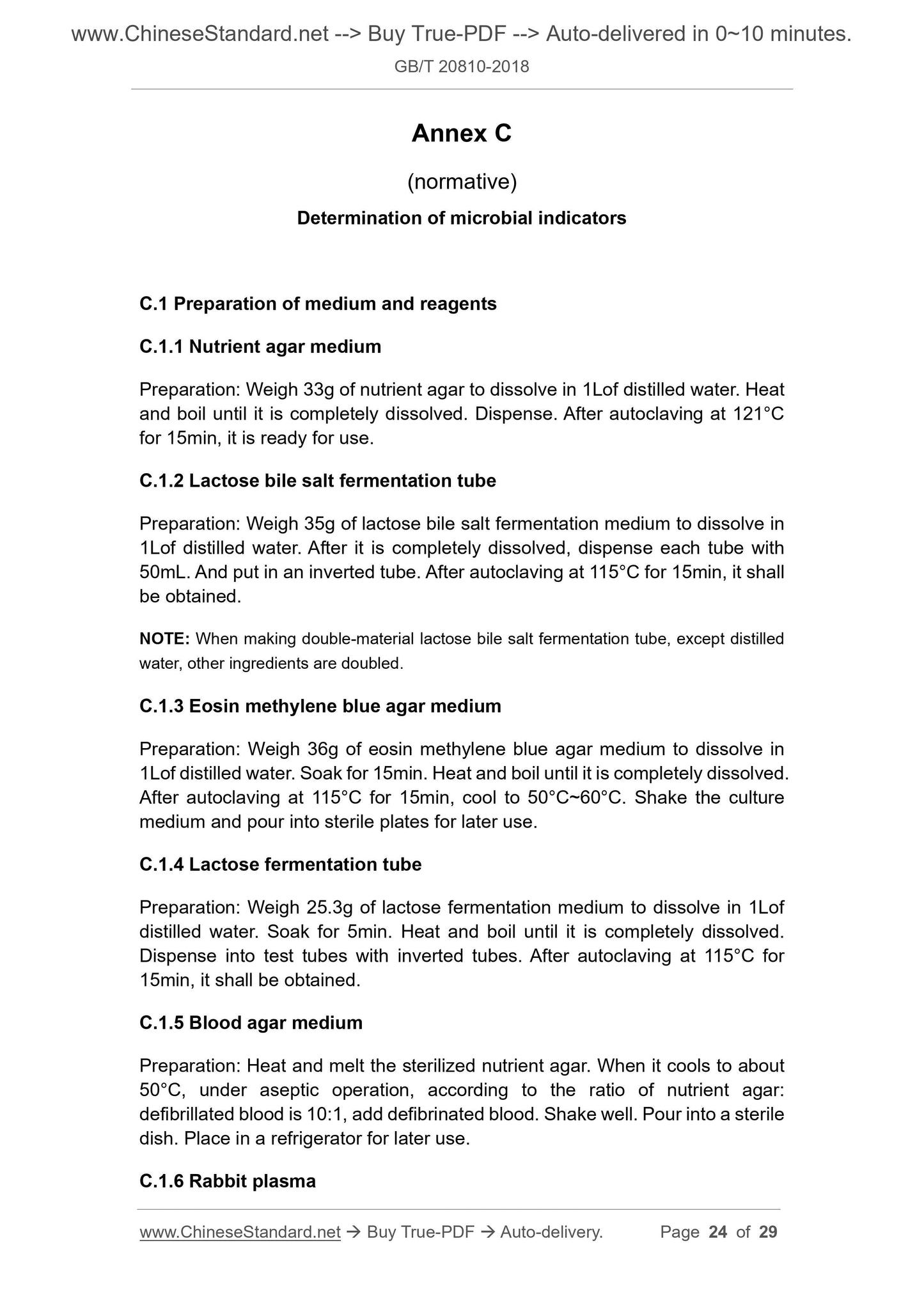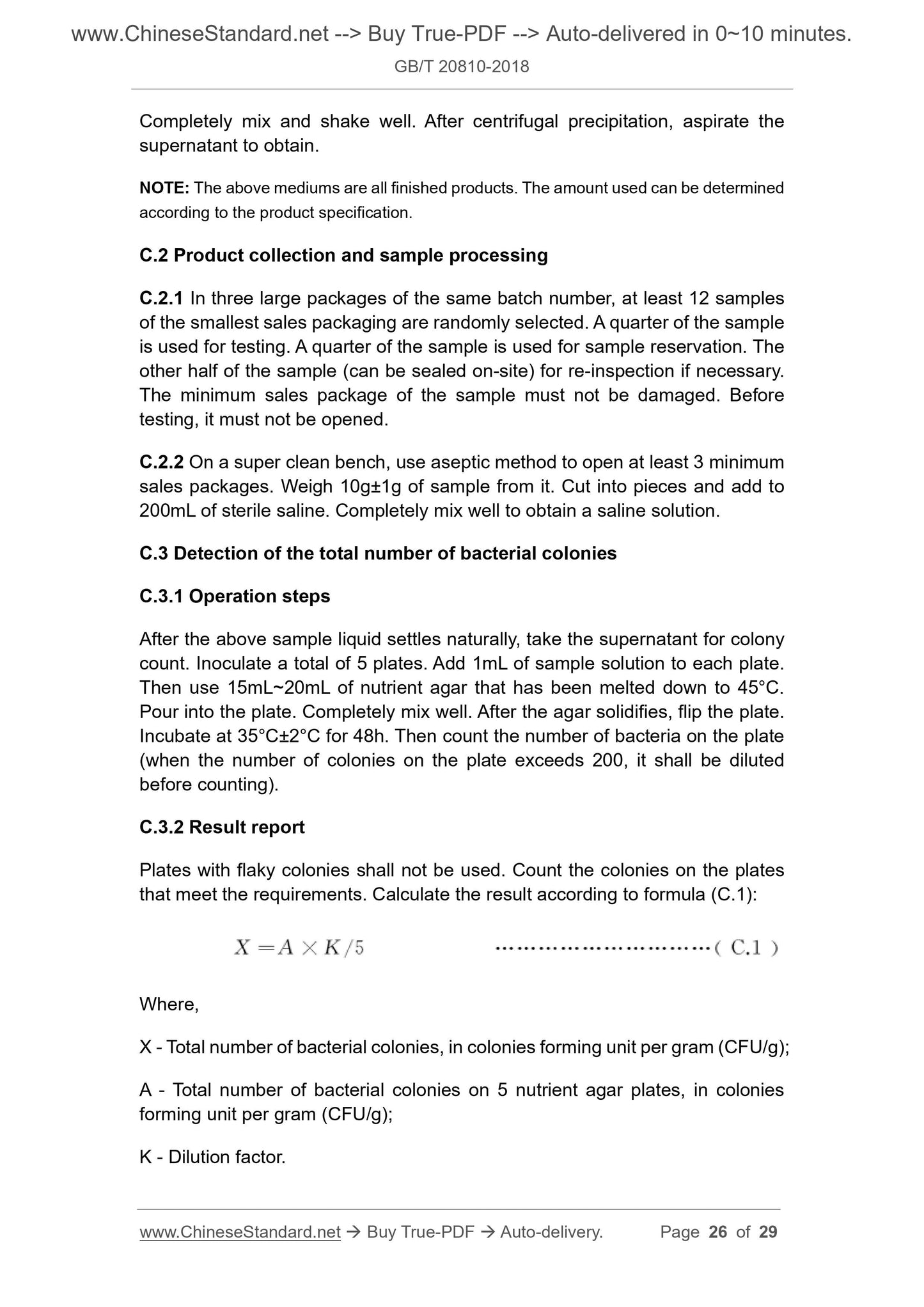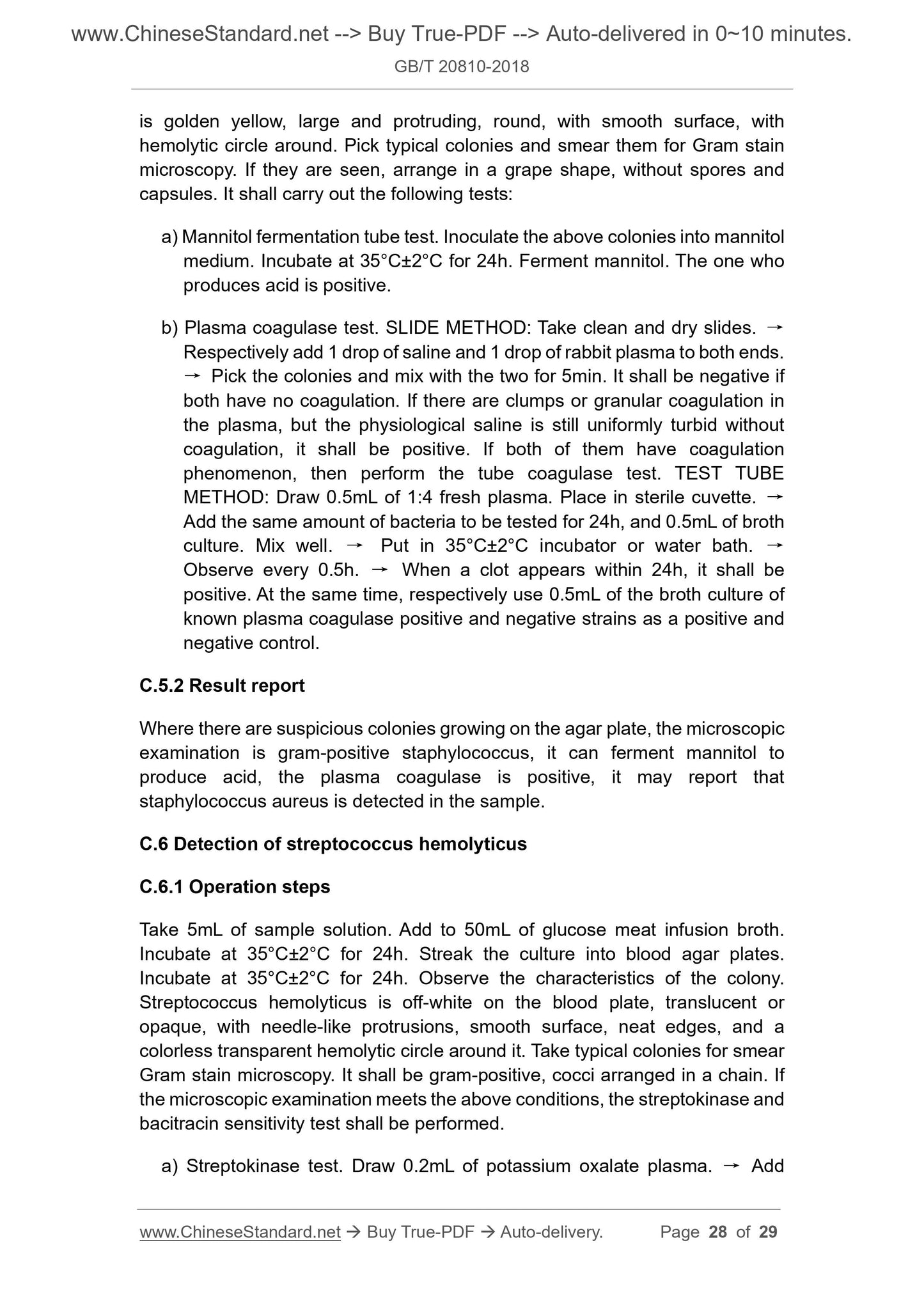1
/
of
11
www.ChineseStandard.us -- Field Test Asia Pte. Ltd.
GB/T 20810-2018 English PDF (GB/T20810-2018)
GB/T 20810-2018 English PDF (GB/T20810-2018)
Regular price
$245.00
Regular price
Sale price
$245.00
Unit price
/
per
Shipping calculated at checkout.
Couldn't load pickup availability
GB/T 20810-2018: Toilet tissue paper (including toilet tissue base paper)
Delivery: 9 seconds. Download (and Email) true-PDF + Invoice.Get Quotation: Click GB/T 20810-2018 (Self-service in 1-minute)
Newer / historical versions: GB/T 20810-2018
Preview True-PDF
Scope
This Standard specifies terms and definitions, classification, requirements, testmethods, inspection rules, marks, packaging, transport and storage for toilet
tissue paper (including toilet tissue base paper).
This Standard is applicable to toilet tissue paper used in daily life and toilet
tissue base paper used for processing toilet tissue paper sold externally.
Basic Data
| Standard ID | GB/T 20810-2018 (GB/T20810-2018) |
| Description (Translated English) | Toilet tissue paper (including toilet tissue base paper) |
| Sector / Industry | National Standard (Recommended) |
| Classification of Chinese Standard | Y32 |
| Classification of International Standard | 85.060 |
| Word Count Estimation | 18,121 |
| Date of Issue | 2018-06-07 |
| Date of Implementation | 2019-07-01 |
| Issuing agency(ies) | State Administration for Market Regulation, China National Standardization Administration |
Share
